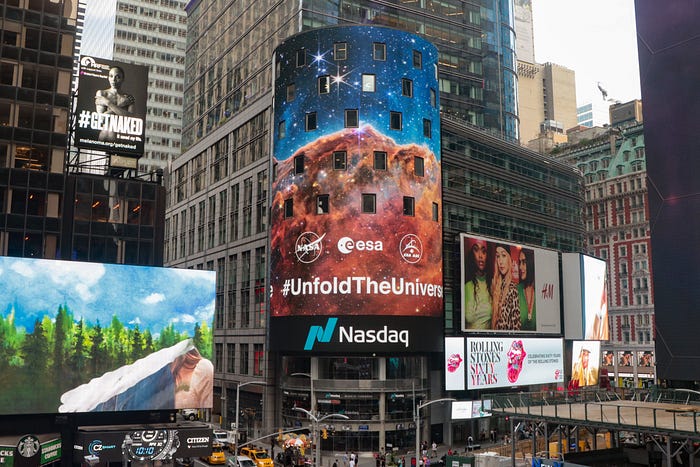NASA’s James Webb Space Telescope is already seeing farther than Hubble ever dreamed.

A new generation of astrophysicists, star-gazers and astronomers have already been inspired by the wonders of the James Webb Space Telescope.

Early during the COVID19 pandemic, while many people- including many students and their teachers- were stuck at home, watching the intergalactic story of James Webb unfold was the perfect escape.
NASA has more ways than ever to connect people with experiences in science, engineering and space travel. What you once had to go to summer space camp to learn, kids of all ages can now learn virtually through NASA’s website, YouTube, social media, and its Flickr page.
Watching Webb’s construction offered an unrestricted glimpse behind the scenes in a STEM field NASA scientists very much hope the next generation is considering entering.
There were art contests, poetry contests; working models, even music inspired by Webb. Submissions in every category poured in from around the world.
Once the James Webb Space Telescope finally launched on Christmas Day 2021, Webb watchers from around the world waited breathlessly for news about mankind’s latest, greatest, most ambitious foray into space.

Scientists at NASA watched the last photo of the James Webb Space Telescope as it drifted out of range. It is the last photo there will ever be of Webb. NASA’s relationship with the JWST will be purely long distance from here on out.

Once James Webb reached at certain point in its travels of the universe, its magnificent, distinctive honey-comb of a mirror would need to be unfurled without a hitch. Scientists at NASA held their breath as the complicated maneuver was carried out far from their helping hands.
To everyone’s surprise, and great delight, the complex process went off without a hitch. In spite of Webb taking a certain level of damage due to meteorite strikes- which NASA scientists and engineers designed the telescope to withstand- it appears to be working as intended.
The first photos the James Webb Space Telescope sent back have exceeded the wildest imaginations of astronomers and Webb watchers.

NASA writes of the above image:
“The image is divided horizontally by an undulating line between a cloudscape forming a nebula along the bottom portion and a comparatively clear upper portion. Speckled across both portions is a starfield, showing innumerable stars of many sizes. The smallest of these are small, distant, and faint points of light.
The largest of these appear larger, closer, brighter, and more fully resolved with 8-point diffraction spikes. The upper portion of the image is blueish, and has wispy translucent cloud-like streaks rising from the nebula below. The orangish cloudy formation in the bottom half varies in density and ranges from translucent to opaque. The stars vary in color, the majority of which have a blue or orange hue.
The cloud-like structure of the nebula contains ridges, peaks, and valleys — an appearance very similar to a mountain range. Three long diffraction spikes from the top right edge of the image suggest the presence of a large star just out of view.”

“Combined with the deep field images released the other day, these images of Jupiter demonstrate the full grasp of what Webb can observe, from the faintest, most distant observable galaxies to planets in our own cosmic backyard that you can see with the naked eye from your actual backyard,” says Bryan Holler of the Space Telescope Science Institute in Baltimore, one of the scientists who helped plan Webb’s mission.
Once Webb’s first postcards were delivered to an eagerly waiting audience, even earthlings who hadn’t been following Webb’s journey got excited about the destination.
Times Square went Webb-wild in NYC.

Webb-watchers combed through mountains of raw data from Webb to publish even more stunning images.


Even more art submissions began pouring in.

There are plenty of people who remember when the Hubble Telescope first launched. From Hubble’s journeys, we learned a great deal about deep space. What we glimpsed with Hubble, we will see up-close with Webb; and beyond.
Webb sees further for a number of important reasons. There have been many exciting breakthroughs in technology over the past decades, after all.

“Both the Hubble and Webb views feature a a blue ‘sky’ dotted with stars and an orange-brown ‘mountain range’ below it,” says NASA of the above comparison. “
“Starting with the Hubble view, the blue portion is a more faded color and mixed with shades of green. Some pink points of starlight, each with 4 diffraction spikes, poke through the blue. The orange-brown portion is dusty, and the few stars that can be seen are only tiny dots of pinkish red.”
“The mountainous area also features a prominent knob sticking out on the left side. In the Webb view, we see that Webb’s blue portion is much more rich, dark and vivid in color. Compared to Hubble, a multitude of stars in shades of light orange and blue are visible, including two giant six-pointed stars on the very right.”
“The orange-brown portion is also dotted with stars galore, each with a set of 6 diffraction spikes. This is because Webb’s infrared vision is able to cut through the curtain of dust, revealing many more stars in the landscape.”
With everything Webb has shown us so far, is it any wonder everyone is so excited?
What will Webb send back next?
(contributing writer, Brooke Bell)